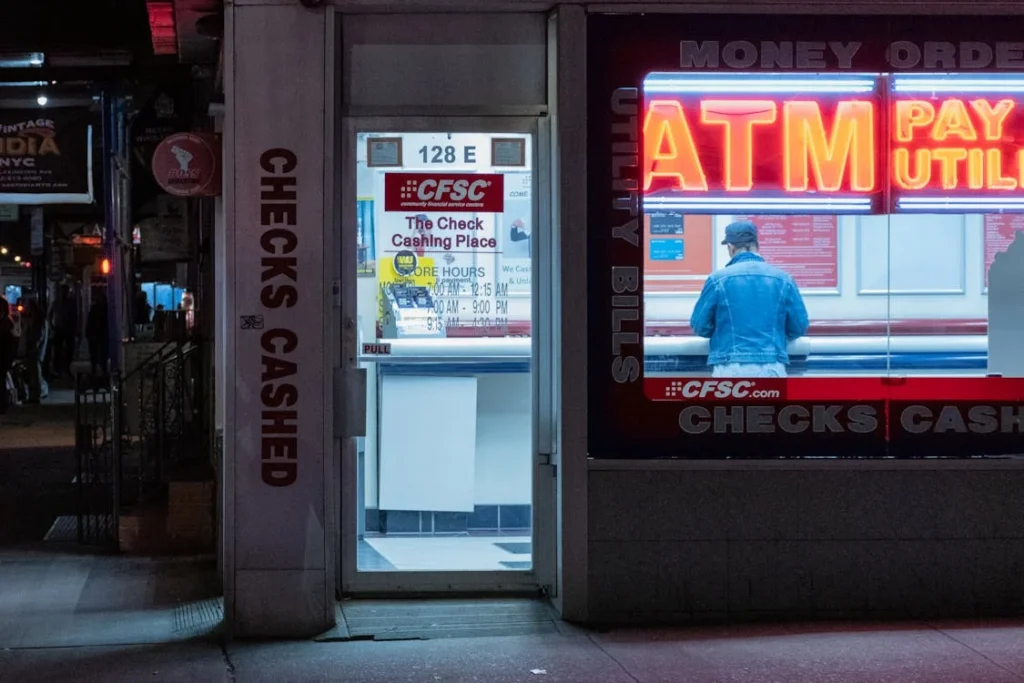How To Void A Check (and what to do afterwards)


Voiding checks remains a common requirement for banking tasks like setting up direct deposits or automatic payments despite our increasingly digital banking world. Proper check-voiding techniques help prevent fraud and ensure your banking information remains secure and usable for its intended purpose.
In this article, we’ll explore the exact steps on how to void a check, what to do after you void a check, and common mistakes some people make when voiding a check.
Steps to Void a Check Safely
Before discussing the specific steps, it's crucial to understand that voiding a check is irreversible and requires attention to detail and careful execution. When done correctly, a voided check is a secure way to share your banking information while preventing potential misuse.
Step 1: Get the check ready
Proper preparation is essential for successfully voiding a check. Begin by gathering your materials and ensuring you work in a well-lit, clean area.
Required Materials:
- An unused check from your checkbook
- A black or blue permanent marker (preferably with a medium-thick tip)
- A clean, flat surface to write on
Choose an unused check and ensure you have a permanent marker that won't fade or wash away over time. The permanence of your marker is crucial—never use a pencil, ballpoint pen, or erasable ink, as these can be altered or removed. You can also consider making a copy of the blank check first, so you have a record of your account information without the void markings.
Step 2: Write “VOID” in big, unmistakable letters
The technique of voiding checks has a fascinating history that explains our current best practices. Writing "VOID" became standard in the 1950s after numerous check fraud cases where canceled checks were altered and reused. Banks and government regulators agreed on this standardized method to protect both financial institutions and consumers from check tampering.
All you have to do is write "VOID" in large capital letters with a permanent marker across the following areas: the payee line, the amount box, the amount line, the signature line, and the center of the check.
Write "VOID" large enough to cover most of the checks while keeping the banking numbers at the bottom visible for processing purposes. These numbers, known as your check's MICR line (Magnetic Ink Character Recognition), must remain clear and readable.
Using a permanent marker helps ensure the void marking can't be removed or altered by someone attempting to commit fraud. The thickness of your writing should be substantial enough that it would be impossible to erase or modify without obvious damage to the check paper.
Step 3: Handle the check securely
Proper handling and documentation are almost just as important after voiding the check. While optional, keeping a record of voided checks may come in handy later. Simply note the check number in your register and the date and purpose for voiding it—such as "Voided for direct deposit setup with the employer." This simple documentation may be useful if questions about the check's status or purpose arise later.
The next steps depend on whether you must provide the voided check to someone else. If you're sending it to set up a direct deposit or automatic payment, make a copy for your records first. When mailing the voided check, use a sealed envelope and consider certified mail for important transactions.
If you don't need to provide the voided check to anyone, you only have to focus on disposing of the check properly. A cross-cut shredder offers the most secure method for destroying the check. If you don’t have a shredder, you can cut the check into small pieces but destroy all relevant sections containing your account number. Never throw away a voided check without destroying it—even voided checks contain sensitive banking information that could be misused if they fall into the wrong hands.
How to Void a Check You’ve Already Sent
Sometimes, we realize we need to void a check after we've already sent it out—maybe you spotted an error, the payment amount was wrong, or you simply changed your mind. Don't panic! You still have options, but you'll need to act quickly.
Contact your bank right away
Your first step should be contacting your bank right away. Most banks prefer you call them directly for this kind of situation, though some allow you to place a stop payment through online banking. This time-sensitive process works best if you have all the relevant information handy, so gather the check number, amount, and recipient information before making contact.
Be prepared with the check number
When you contact your bank, they'll need specific details to process your stop payment request. Having the check number ready is crucial—you'll find this in your checkbook register or through your online banking. You'll also want to have the exact amount and the recipient's name on hand, as these details help ensure the right check is stopped.
Check for a stop payment fee (and decide if it’s worth it)
Some banks charge a stop payment fee, and it's not cheap—typically ranging from $20 to $35. Consider whether the amount of the check justifies this cost. For a $20 check, paying a $30 stop payment fee might not make sense. However, for larger amounts, that fee could be worth avoiding potential complications.
What to Do After Voiding a Check
Once you've properly voided your check, you're not quite done yet—especially if someone specifically requested it.
Send the voided check to whoever asks for it (like your employer or financial institution), but first, make a copy for yourself. This copy serves as a backup in case anything goes wrong in transit, and it's handy for future reference if you need to confirm any account details.
After sending it off, take one final step: follow up with the receiving party to confirm they got your voided check and successfully processed your information. This simple confirmation helps avoid delays in setting up your direct deposit or automatic payments and gives you peace of mind that everything's been handled correctly.
Common Mistakes to Avoid When Voiding a Check
Even though voiding a check is a relatively simple process, there are several common pitfalls you'll want to watch out for.
Mistake #1: Writing "VOID" too small or lightly
One of the biggest mistakes when voiding a check is writing "VOID" too small or with too light a touch. If the letters aren't large and bold enough, someone could potentially alter or erase them. The whole point of voiding a check is to make it completely unusable, so don't be shy—those letters should be big, bold, and impossible to miss.
Mistake #2: Covering up the banking numbers
While you want to make the "VOID" marking prominent, be careful not to cover up those important numbers at the bottom of your check. These numbers are crucial for setting up direct deposits or automatic payments. If you accidentally cover them up, you'll likely need to start over with a new check, as most organizations won't accept it.
Mistake #3: Not keeping track
Losing track of which checks you've voided can lead to confusion when balancing your checkbook or reviewing your account. Whether you void a check accidentally or on purpose, always note it in your check register. You'd be surprised how often people forget about a voided check and then panic when they see a gap in their check numbers.
If you're struggling to manage your finances, check out my guide, How to Build a Bulletproof Budget (in 5 simple steps), for a comprehensive system to manage all your banking activities.
Other More Convenient Methods
These days, you don't always need to void a physical check to share your banking information. Many modern alternatives can save you time and paper while being just as secure. Here are some popular options:
- Many banks now offer downloadable direct deposit forms that contain all your necessary account information, eliminating the need for a voided check.
- Online banking platforms typically provide virtual versions of voided checks that most organizations accept—you can download, save, and send them.
- Some banks can provide official letters with your account details, which serve the same purpose as a voided check and often come with additional security features.
While these alternatives are becoming more widely accepted, it is still recommended to keep a few checks handy. Some organizations, particularly smaller businesses or traditional institutions, might still prefer the classic voided check.
For a complete guide on growing your money strategically, check out my article, How to Get Rich: 7 realistic steps to build your wealth today. Money is a complex thing, and getting rich won’t happen overnight. It’s all interconnected so you might as well start becoming an expert now.
Other Reasons You Might Need to Void a Check
While direct deposits and automatic payments are the most common reasons for voiding checks, there are several other situations where you might need this skill. Here's what you should know.
Correcting mistakes made while writing checks
We all make mistakes when filling out checks—whether it's writing the wrong amount, misspelling a name, or using the wrong date. When this happens, voiding the check is the safest way to ensure it can't be used, allowing you to start fresh with a new one.
Verifying account ownership
When opening new accounts or services, financial institutions often request a voided check to prove you own the account. This is a simple way for them to verify your banking details and ensure that all your information matches their records.
Setting up business systems
Businesses often need voided checks for various financial operations. Whether setting up vendor payments, creating payroll systems, or establishing new banking relationships, a voided check provides all the necessary routing and account information in one secure document.
Learning to properly void checks is just one piece of managing your finances effectively. If you want to take control of your financial future and learn more money management strategies, check out my New York Times bestseller, I Will Teach You To Be Rich. It's packed with practical advice on everything from banking basics to building long-term wealth.